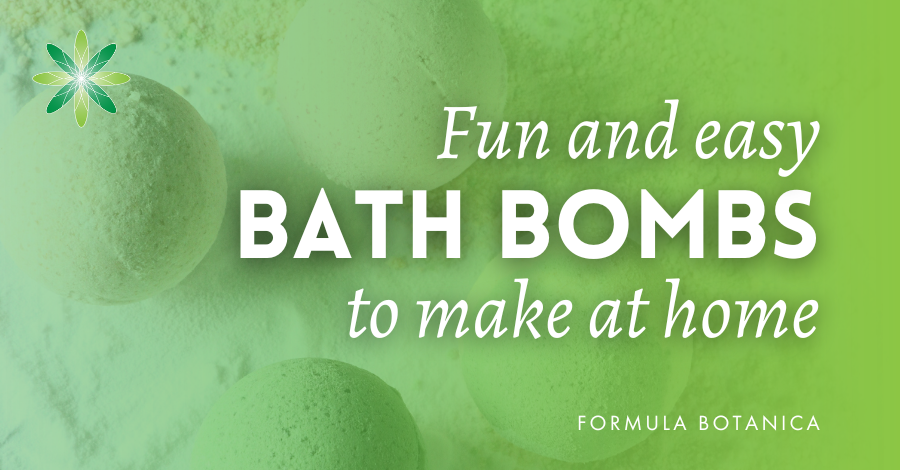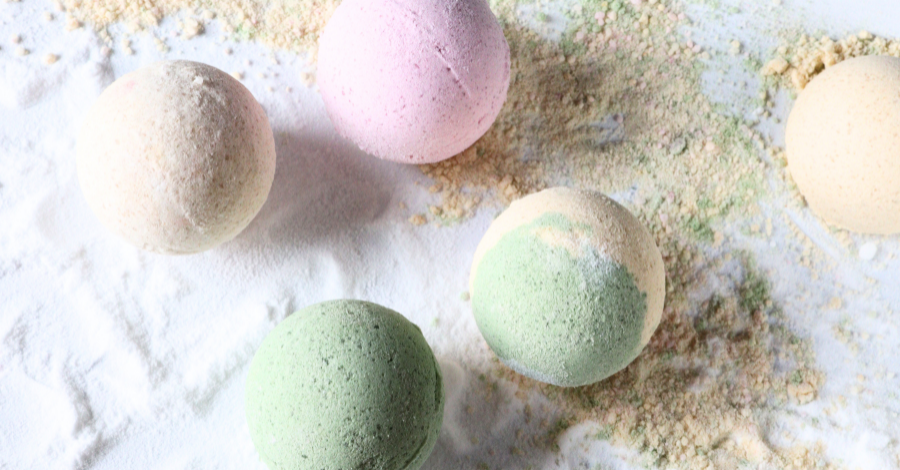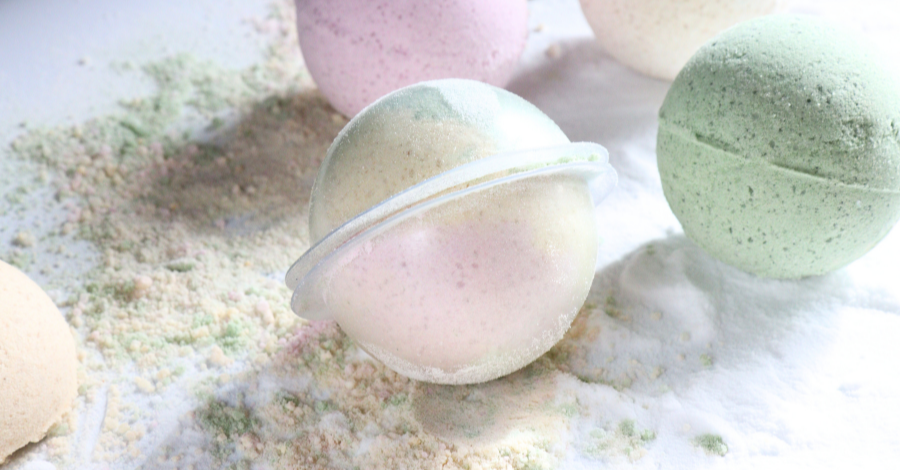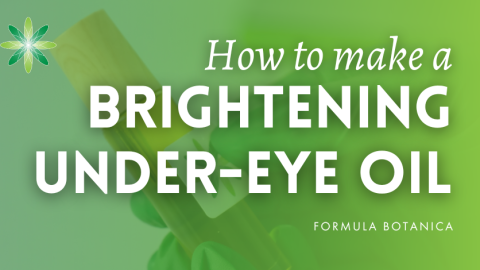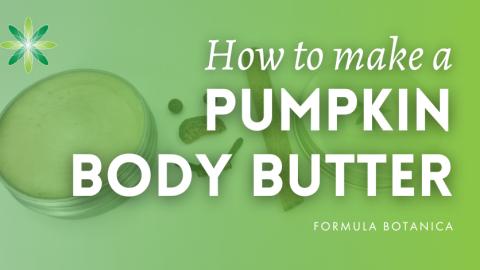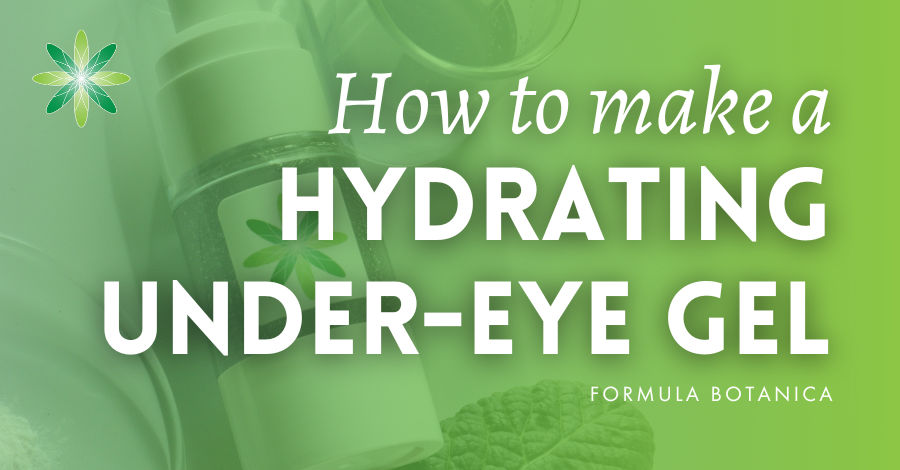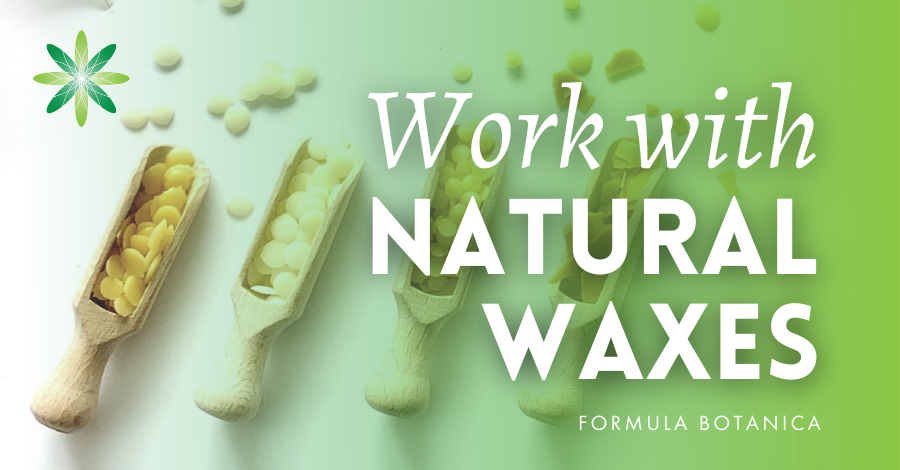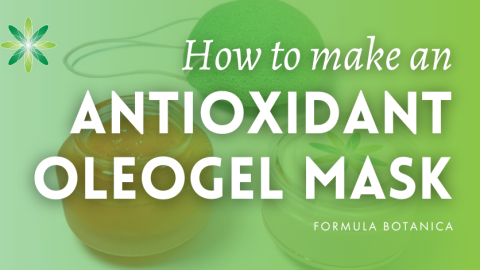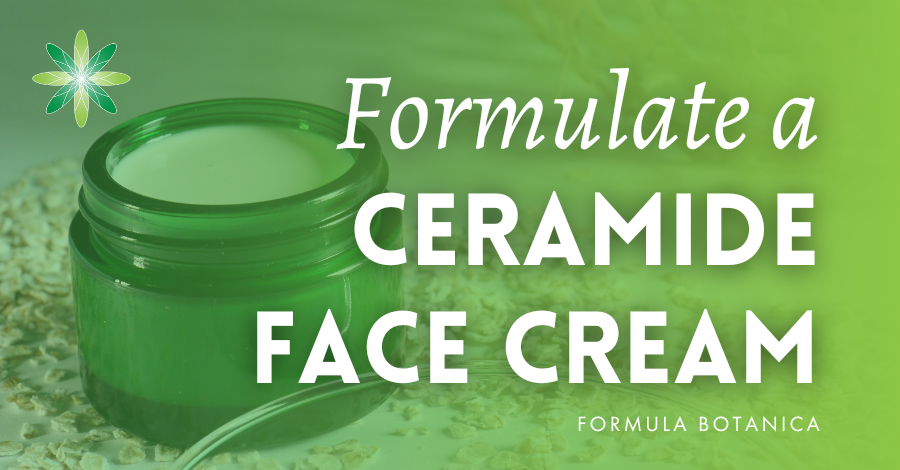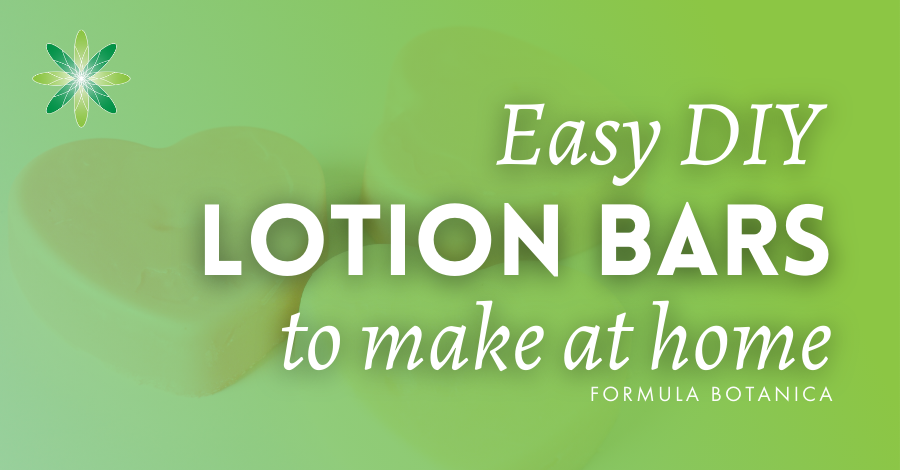Fun and easy to formulate, bath bombs are among the most popular skincare products for beginners to make at home. They are loved by all ages for their ability to create a fizzy, fragrant, colourful bathtime experience. They are solid, but in contact with water, they dissolve easily, leaving a lot of bubbles and fizz.
You’ll come across them in different shapes, colours, and scents, but you may not have realised that they can contain some additional, skin-beneficial ingredients such as moisturisers, active botanical ingredients, and inorganic materials such as salts or clays.
The original formula for bath fizzes, or bath bombs, was invented in 1989 and patented a few years later. They were inspired by the effervescent antacid tablets that contain the active ingredient, along with citric acid and sodium bicarbonate.
Our bath bomb formulation is simple to make, yet comes with some nice additives – oat silk and sandalwood, as well as a zingy citrus fragrance – to make the perfect bathtime pleaser. First, let’s dive into the science of that fizz and the ingredients that make bath bombs so spectacular when they hit the water.
What gives bath bombs their fizz in water?
The fizzing and bubbling of bath bombs is caused by an acid-base chemical reaction. The chemical principles involved in fizz are simple and require two fundamental ingredients – an organic acid and an organic base.
The science behind the fizz
Baking soda, or sodium bicarbonate (NaHCO3), is a weak base, and when it comes into contact with water (H2O), it reacts with the hydrogen ions (H+) in water to form carbonic acid (H2CO3). Citric acid (C6H8O7) is a weak organic acid. When citric acid comes into contact with water, it donates hydrogen ions (H+) to the solution.
When you mix the dry bath bomb (containing baking soda) with water (containing citric acid), an acid-base reaction occurs. The bicarbonate ions (HCO3-) from the baking soda react with the hydrogen ions (H+) from the citric acid to form carbon dioxide gas (CO2), which is responsible for the fizzing and bubbling sensation.
This rapid release of carbon dioxide gas creates the effervescent and bubbling effect that makes bath bombs so enjoyable. When you drop a bath bomb into your bathwater, the acid-base reaction between the baking soda and citric acid begins, resulting in the release of carbon dioxide gas and the characteristic fizzing. This can also release any fragrances or colourants added to the bath bomb into the water, creating a relaxing and visually appealing bath experience.
What else goes into bath bombs?
Bath bombs often contain fragrances and colourants to enhance the bathing experience. These are typically added in the form of essential oils and food-grade colourants. These components do not directly contribute to the fizzing reaction but make the bath bomb visually and aromatically appealing.
Although the precise formulation of bath bombs can vary, the proportion of citric acid and sodium bicarbonate should stay relatively constant. Additional ingredients can include surfactants, salts, oils, or botanicals to provide additional benefits for the skin and enhance the bathing experience and relaxation. To find out more about how surfactants work, see:
Here are some ideas for additional ingredients to include in your bath bombs, with an indication of what they bring to the formulation.
Salts – Epsom salt, Himalayan salt, sea salt, black lava salt, and similar salts add a bit of texture, colour, and a spa-like feel to the bath bombs.
Botanical oils – all types of natural plant oils, such as coconut, jojoba, almond, or apricot can be used in very small quantities to bring a nice touch of emollience as an additional experience during bath time.
Essential oils – for aroma, this is the second most important ingredient since olfactory experience is the next sense we target with this formulation. The essential oils you select can elevate your bath bombs to create a relaxing, refreshing, invigorating, or calming experience as desired.
Solubilisers – these are a sub-class of surfactants that are able to solubilise very small amounts of water-insoluble ingredients, such as plant oils or volatile essential oils, into water to prevent the formation of an oily layer on top of the water once the bath bomb is dissolved fully. By distributing essential oils uniformly in the water, they help avoid the risk of skin irritation caused by undissolved essential oils floating on top of the water surface and coming in direct contact with the skin. For more on using solubilisers, see our post:
Surfactants – these are foaming agents that reduce surface tension between two liquids or between a liquid and a gas. Simply explained, these are ingredients responsible for creating a super foaming bath bomb. Adding a powdered surfactant will help to create a nice, rich foam with stable bubbles. If the solubiliser is not present in the formula, an anionic surfactant can also help to solubilise oil-based ingredients (essential oils) for a safer bath. The most frequently used surfactants in bath bombs are sodium lauryl sulfoacetate, sodium coco sulfate, or sodium cocoyl isethionate. Find out more about surfactants in our articles:
5 natural surfactants for use in organic skincare
How to make a natural shower gel using surfactants
Colourants – Bath bombs come in various colours, and the addition of colourants allows manufacturers to create appealing products. However, we recommend using colourants sparingly, and the rule of less is more should be strictly applied. You can use iron oxides, micas, or food colourants. If you want to be more creative, try to use plant extracts or powders (such as spirulina, turmeric, or annatto). Make sure you use colouring agents at appropriate amounts so as to not colour the skin or the bathtub. Discover natural colourants in our blog post:
Clays – a small percentage of clays will add texture and often colour to bath bombs. We have some information on using clays in our post mastering face masks: a formulator’s guide.
Starches / dried milks – starch can contribute to the texture and consistency of the bath bomb mixture. It helps create a smoother, more uniform blend of dry ingredients, making it easier to mould the mixture into the desired shape or form, such as a spherical bath bomb. Starch also has the ability to absorb moisture, thereby helping prevent premature activation of the citric acid and baking soda reaction.
Different types of starch can be used; milk, for instance, contains natural fats and proteins that can help moisturise and nourish the skin. When dried milk is incorporated into a bath bomb, it can release these beneficial components into the bath water.
Active ingredients – these can add value and uniqueness to your formulation, although if you intend to sell your bath bombs, make sure your pricing can sustain and reflect the extra costs of any high-performance ingredients you include.
Botanicals – dried plant powders, flowers, and petals are added mostly for aesthetics. Having bath bombs with flower petals, buds, or combinations of these makes them visually appealing, but some may find it impractical since large plant particles will remain in the bath and may get stuck to the skin and be tricky to rinse off.
Where is the preservative?
As this is a single-use, solid product in one, it is not necessary to use a preservative. Do ensure your bath bombs are stored in a dry, airtight container to avoid the possibility of water or humidity activating them or causing them to degrade before use.
Can I add liquids to the bath bomb formulation?
As is the case with all solid products, it is important to limit the amount of liquids to what is necessary and required for their functioning. Bath bomb formulas need different amounts of liquid content, depending on the quantity and nature of additional powdered material (clays, starches, plant material, and so on) so that they have enough moisture to enable the powdery mass to be pressed into the desired shape.
Without adequate moisture, the mixture won’t stick together, and bath bombs may crumble or fall apart. On the other hand, if the mixture is too moist, it will lead to premature activation of the chemical reaction between citric acid and sodium bicarbonate, and the mass will fizz before being pressed into forms to ruin the whole batch.
Bath bomb moulds and shapes
Bath bombs come in various shapes and sizes, and the choice of mould plays a significant role in determining their appeal. Round moulds are among the most popular, as they create a classic shape that is easy to handle and drop into the bath. These moulds range in size from small, golf ball-sized bath bombs to larger, tennis ball-sized ones.
Bath bombs can be moulded by hand or using an industrial press. For our project, we used a simple two-part spherical mould made of durable plastic.
Our easy bath bomb formulation
In addition to the foundation ingredients, our bath bomb formulation includes oat silk and sandalwood. Oat baths are amazing for their rich content of minerals and nourishing and soothing properties. The sandalwood powder has a lovely, light yet luxurious aroma and is a beautiful beige. We included it also for its anti-inflammatory and calming skin benefits.
Makes: recommended trial batch size: approx. 100g (one bath bomb).
Formulation: a cold process.
Time taken: 15 minutes.
Level: beginner-level formulation to personalise and adapt.
| Phase | Ingredients | INCI | Weight (g) |
| A | Citric acid | Citric acid | 31.00 |
| A | Sodium bicarbonate | Sodium bicarbonate | 60.00 |
| A | Sodium lauryl sulfoacetate | Sodium lauryl sulfoacetate | 2.00 |
| A | Oat silk powder | Avena sativa kernel powder | 2.00 |
| A | Sandalwood powder | Santalum album bark powder | 2.00 |
| B | Cotton seed oil | Gossypium herbaceum seed oil | 0.50 |
| B | Marula seed oil | Sclerocarya birrea seed oil | 1.00 |
| B | Tocopherol | Tocopherol | 0.20 |
| B | Litsea cubeba fruit oil | Litsea cubeba fruit oil | 0.30 |
| B | Red orange essential oil | Citrus aurantium dulcis fruit oil | 1.00 |
| Total: 100.00 |
Equipment:
- Scales
- Glass beakers / stainless steel bowls
- Spatulas, stainless steel spoons, and pipettes
- Protective gloves
- Suitable mould – silicone or plastic
- Suitable airtight container
Method of Manufacture
- Preparation
Sanitise your utensils and work area, and wear appropriate PPE according to GMP. As we are working with dried, powdered ingredients, it is advisable to wear a mask to avoid inhaling particles.
- Dry and powdered ingredients
Weigh out separately all ingredients for phase A and then mix ingredients together well, ensuring there are no lumps of citric acid or sodium bicarbonate.
- Liquid/oil ingredients
Weigh out the botanical and essential oil ingredients for phase B and mix well.
- Mix dry and oil ingredients
Add the mixture of phase B into A and mix well.
- Mould the bath bombs
Manually push the material into the moulds as firmly as you can. You can leave the material in the mould to harden, or you can remove it from the mould immediately and let it dry on a drying rack. This formula enables you to use both methods.
- Dry the bath bombs
Let the bath bomb harden and dry out completely before storing it in an airtight container.
- Label and date
Label your bath bomb container with the product name, date, and batch number.
Formulation notes
This formula represents a gold standard bath bomb formulation enriched with a small percentage of anionic surfactant for a better fizz and to create a nice foam, as well as to solubilise oil-based ingredients when the bath bomb is placed into water.
You are free to substitute the liquid oil phase ingredients for your favourite ones, but do not increase the overall phase B percentage. If you find the blend too dry, your bath bombs crumble upon touch, or they do not hold their shape at all, you can add 2-3 sprays of ethanol or isopropyl alcohol (99%) to get them moist before pressing them into moulds.
Suggested suppliers
Many of the suppliers below ship internationally. We have given their home country base.
Aromazone (EU).
Aromantic (UK)
Alexmo Cosmetics (EU)
O&3 – The Oil Family (UK/EU)
Manske (EU)
Soap Kitchen (UK)
Elemental (EU)
Lotioncrafter (USA)
Essential Wholesale (USA)
Go Native (New Zealand)
Naturally Balmy (UK)
Soap & More (Canada)
FREE TRAINING
Learn how to become an
Organic Skincare Formulator
FREE TRAINING
How to become an
Organic Skincare Entrepreneur
FREE TRAINING
How to become an
Organic Skincare Entrepreneur
Leave us a comment

Miroslava is a former grading tutor at Formula Botanica. She has a Ph.D in neuroscience, expertise in biology and chemistry, and a lifelong passion for natural cosmetic formulation.

